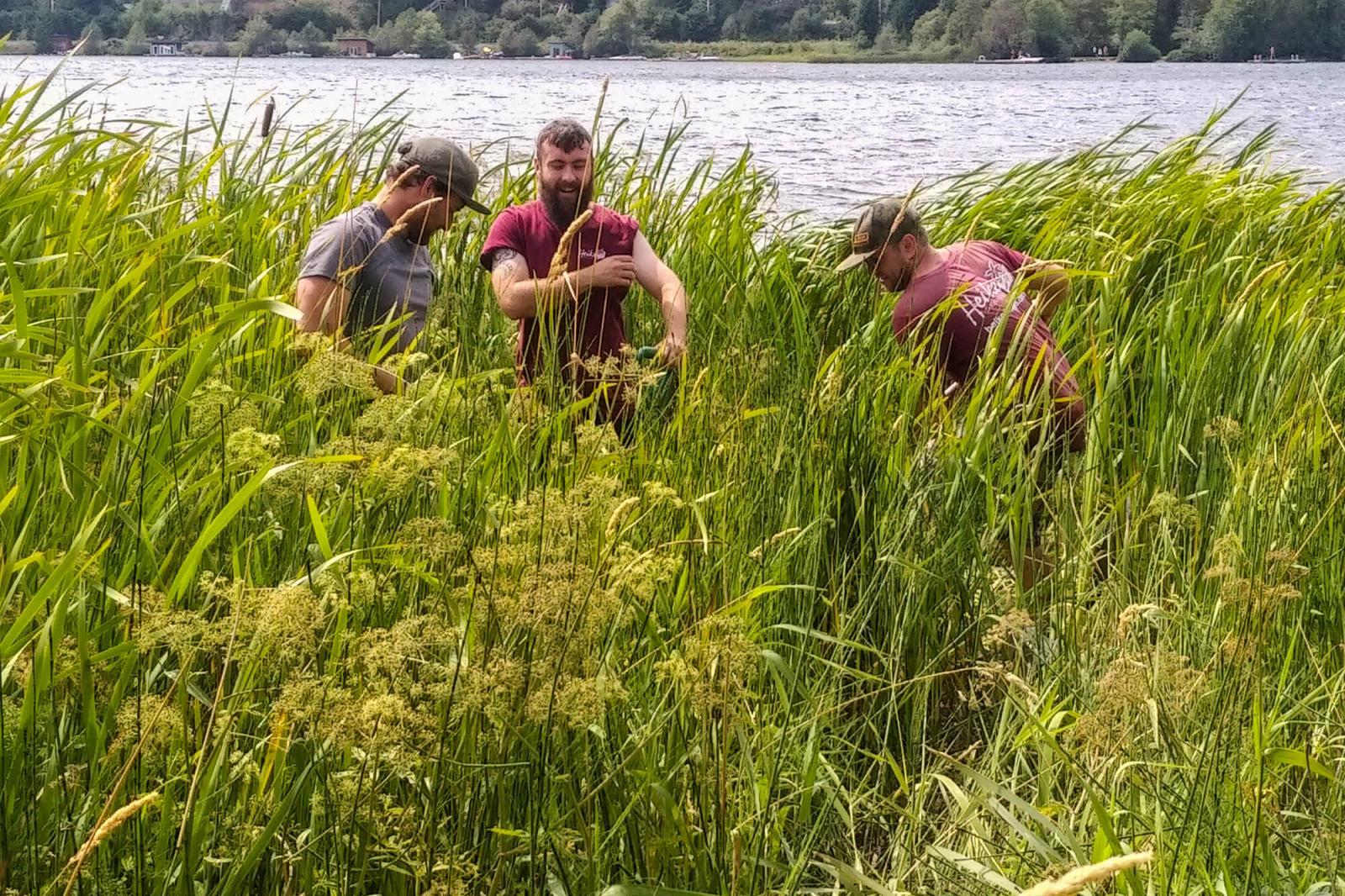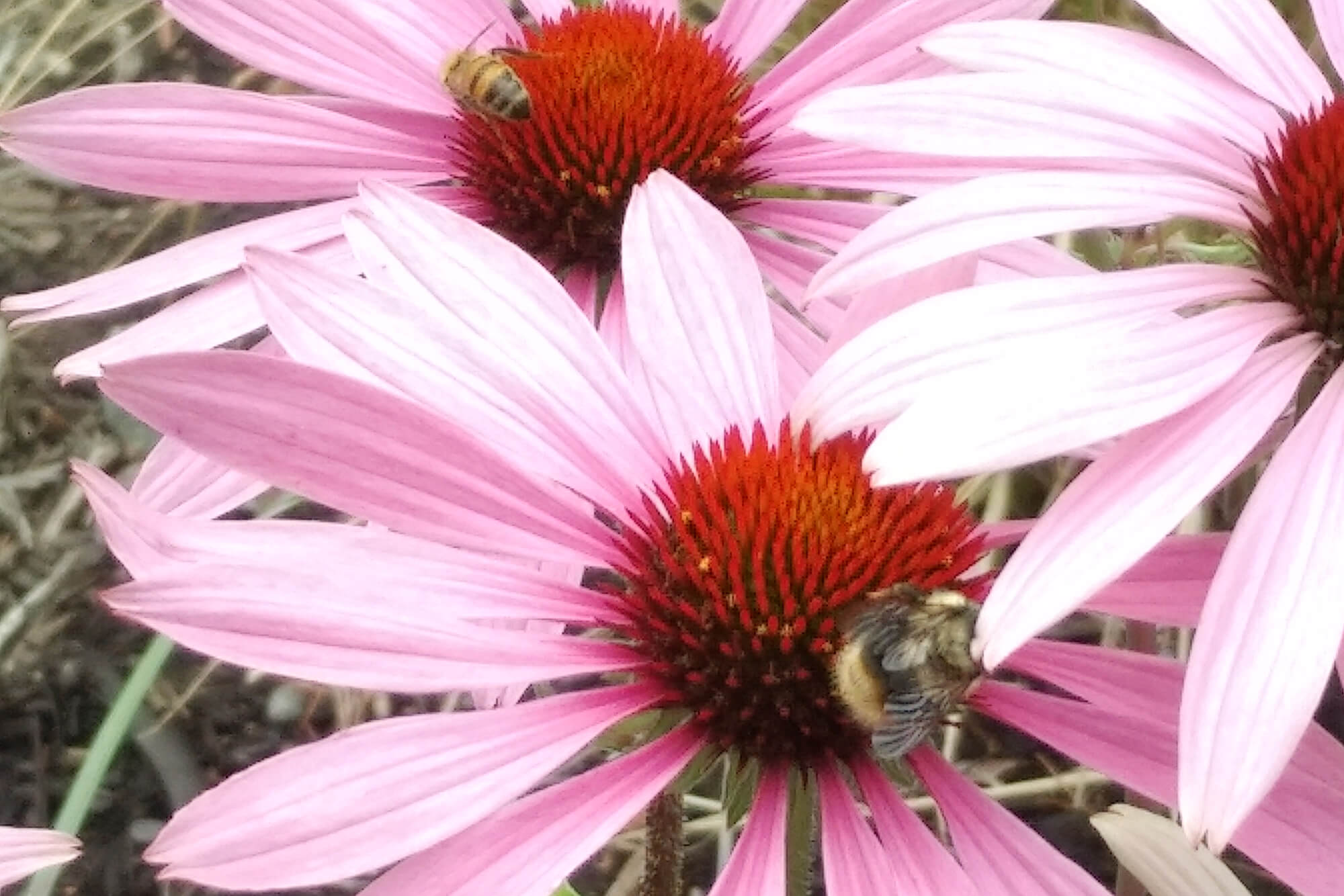December 1, 2019

There is an incredible — and urgent — opportunity for industry to be a force for positive change. Everyone has to be a leader.
Sustainability makes sales
Landscape pros have all the tools needed to align environmental action with prosperity
BY SEAN JAMESWhat do potential customers care about, and how can it help your business? It seems we professionals are often playing catchup with what the public really wants. Opportunity is out there. So what do we need to know, and what can we do to be part of the expanding interest in eco-friendly landscaping? Garden experts and landscapers from across Canada have offered their insights.
I was chatting with exclusively-organic Halifax gardening guru, writer, blogger and radio show host, Niki Jabbour, who observes, “My readers range from newbie food gardeners to those who have been gardening for decades. Often they’re looking to expand their skill set into winter harvesting, greenhouse growing, or want to try cool new-to-them crops like cucamelons or ground cherries.” Niki understands what the public wants; they want what’s new and cool. They need someone to teach them. That should be us. We need to keep up, but we have to get outside our regular circles.
Poised for leadership
Heike Stippler, from Whistler, B.C., says, “The biggest challenge is showing people that it [eco-friendly gardening] takes time and understanding — that it’s not ‘instant.’ But once you get eco-friendly, it’s even more about timing. Eco-friendly lawns and fertilizers take more time. Even pruning and recovery; all these things take time. As president of Heike Designs, she laments, “It gets frustrating being the bearer of bad news; having to fix the mistakes of others, educating the client.” Having the depth of knowledge to offer this education is an ongoing gift and challenge.
Lorraine Johnson is an Ontario writer and popular speaker who’s been advocating for environmental landscape practices through her books, such as 100 Easy-to-Grow Native Plants for Canadian Gardens, for decades. Her thoughts are blunt, but good words and what we need to hear: “I think there’s an unfortunate Catch-22 happening, and it’s impeding progress on the environmental front. The horticultural industries often say they provide what the market wants. At the same time, consumers are highly motivated to make environmentally-positive choices, but in many cases, the products or services just aren’t available. Think, for example, of the difficulty of finding native plants grown from local seed sources in the general nursery trade. This is just one example. There is an incredible — and urgent — opportunity for industry to be a force for positive change, but we’re just not seeing it yet on the scale that the environmental crisis demands from everyone — industry and individuals. We need to stop waiting for others to lead. Everyone has to be a leader. Now, not later.”

What more can we do? Starting small is something. Stippler feels, “Even just making smart trips, minimizing waste, doing several things in one trip, taking the time to be sure you’ve got everything and are organized, can save a lot of carbon — and save money on crew wages. Route planning can make a huge difference.” Landscape Ontario’s Environmental Stewardship Committee urged folks to start ‘at home,’ looking for ways to run companies in environmentally-friendly ways, before looking for ways to make landscapes eco-friendly.
“I don’t really use the word eco-friendly. I use the term ‘environmentally-conscious,’” says Stippler. “‘Good horticulture’ and ‘eco-friendly’ go hand-in-hand. Proper horticulture is not that far from being eco-friendly. We kind of have to be horticulturally smart to have a base to be eco-friendly.
“In Whistler, there are quite a few clients that want a natural look; blending into the environment. A few people are asking specifically for ‘natural’ and ‘low-maintenance.’ Doing it right is a good fit for them. [There’s also] the other end of the spectrum; people want what they want. Some can be educated, but others not.” Most people don’t know which plants are native and which aren’t. If they don’t ask for eco, they don’t need to know that their landscape is designed with beautiful natives and nativars, supporting biodiversity, lowering water use, and still raising property values. Just do it. There’s no harm.
Green value appreciates
Jabbour offers more thoughts. “I practice diversity in my vegetable garden to encourage a healthy soil food web and avoid nutrient depletion, but also to invite a wide range of beneficial insects to my garden. Plus, pairing food and flowers makes for a gorgeous garden that’s eco-friendly and beautiful for the gardener. Being an eco-friendly food gardener is viable for anyone. Paying attention to your soil health is vital. Healthy soil grows healthy plants, which in turn offer a good harvest. I also practice crop rotation so my soil isn’t depleted of essential nutrients, and insect pests and disease problems are minimized.”
Incidentally, following folks like Jabbour on social media is an excellent way to get ahead of what the public is interested in. Other greats include The Garden Professors Blog with Dr. Linda Chalker Scott, Master Gardeners of Ontario and soils expert Cristina da Silva — and that’s just scratching the surface (see sidebar).
Manitoba’s Guy Dowhy of Dowhy Design & Landscapes shares his thoughts, “Landscaping on the Prairies is tough, or should I say hard-y.” He continues, “We think that the best thing we can do is start with locally-sourced, prairie-hardy plant selections. We have great plant growers and breeders in Manitoba who are improving the aesthetic characteristics of our hardy plants. Every client wants a great-looking yard but minimal maintenance, so plants have to be given the best opportunity to get established, and then survive for years to decades. The best thing we do is educate the client on the benefits of using organic mulches versus crushed stone on filter fabrics. Once we explain that the mulches will regulate soil moisture and temperatures while suppressing weeds and contributing to the soil’s organic matter content, they will always agree to go with this option.”
 The public wants what’s new and cool like cucamelons. They need someone to teach them.
The public wants what’s new and cool like cucamelons. They need someone to teach them.
Dowhy believes it’s about the long-term success and return on investment for the customer. Soil stewardship may be the best hope for reversing climate change. More on the bright side, Dowhy continues, “Our industry is the only property investment that will increase a property’s value and aesthetic over time, with proper initial installation and some guided upkeep.”
The recruitment angle
The new Ontario curriculum for Horticultural Apprenticeship and the national Red Seal Program have large swaths dealing with soil and water stewardship as well as enhancing biodiversity, in part to satisfy the demands of a potential workforce that wants to change the world. Forward-thinking concepts are introduced, such as ‘refugia’ (leaving piles of brush for creatures to hide in, possibly tucked behind some shrubs) and ‘let it lay’ (allowing fallen logs to rot in place providing habitat for all forms of life), which is especially important since, according to Peter Wohlleben, author of The Hidden Life of Trees, 60 per cent of all living things have to spend part of their life in rotting wood.
Other benefits? Back to Whistler and Heike Designs: “Being eco-friendly can bring and keep employees in their mid-20s to mid-30s. They care about that kind of stuff and they like that part. It’s sometimes challenging when it comes to training them how to deal with each property differently. Sometimes you leave the seedheads and sometimes you don’t. It’s not quite as simple and straightforward as traditional hort, and it requires more training and understanding of how and why it needs to be done this way and to judge.” It’s a challenge to be embraced, not feared.
Stippler is firm in her beliefs. “If we want to elevate the industry, we need to make people understand that it’s more than just mowing lawns. It’s the thinking that sets things apart. Being involved in associations and staying on top of what’s happening is what makes a difference — not just what happens on site. There’s so much to learn. With the internet and social media, people find out a lot on their own.
“In the long run it pays off. Stick with it. You will save money doing it right. It doesn’t happen overnight,” says Stippler. “It goes with building relationships with clients; even building relationships with gardens, like you know the plants personally (laughing). We do inspire and we do make quite a bit of a difference. Think about how many trees we plant and how much stormwater those trees take up and how that affects the whole environment we live in.”

Getting the word out
While word of mouth is great, today’s customers (or is it ‘audience’? Same thing maybe!) get a lot of information from social media. How to get the word out? In a perfect world, folks can’t get away from you! Every turn. Every click. Every time they search ‘gardens’ or ‘landscapes.’ Being everywhere is an ongoing challenge today, but a mission that can be fun, fulfilling, and even educational.In what ways can a professional get the word out there? Niki Jabbour tackles it on many fronts. She says, “Read, research, join a gardening club and talk to experts to expand your knowledge.” Good thoughts. Why don’t we join garden clubs? Is it a feeling of superiority? “There’s nothing they could teach us.” It’s certainly not a lack of civic duty. It’s fantastic how many community projects landscape companies get involved with. Remember that an army of horticultural society members (and no, they’re not all little old ladies!) is great at spreading the word about organizations they like.
“What if I’m not interesting enough?” Don’t be afraid. Just post about what interests you today. The folks you want to work with will find it interesting. Those who don’t find it interesting? You probably didn’t want to work with them anyway. Make sure your photos show things being done safely, professionally and in good taste, although a touch of impish humour doesn’t hurt when trying to engage folks.
The beauty of using social networking is that as you build a following (which doesn’t happen overnight, but be patient), your followers will do your outreach for you.
Niki Jabbour, who is also one of the intensely-popular ‘Savvy Gardeners’ on Pinterest, is practicing techniques like diversity, intensive planting, interplanting, and companion planting to promote a healthy garden. Her 20 raised beds are a combination of vegetables, herbs, and flowers to attract bees and other pollinators as well as beneficial insects to reduce and control pest populations. There are many ways to do good.
Sean James operates Ontario-based Sean James Consulting and Design, and is an eco-consultant and popular speaker.